

weaving. 2025
In its form and in its making, this weaving is a reference to the body, a body, my body, a trans body. It is an act of resistance.
It represents my body as it engages in the act of peeling away trans tape: a material that affirms me in my identity, and a process that returns me to my body as it is. My relationship to trans tape is unique in that it is a material manifestation of my gender, and it changes the way I walk through the world.
While the weaving records this moment of intimacy, tension, and unveiling, it acts as a mirror to the realities we face as a society during the rise of proto-fascism and right-wing extremism. trump administration; the violent peeling away of trans rights, DEI, healthcare, and language about race, gender and sexuality. Unlike removing trans tape, this peeling away doesn’t only leave sticky adhesive and skin abrasions; it costs lives. By suicide and homicide. By lack of healthcare.
Textiles have historically been a way in which people create records of personal and cultural histories, especially in the context of oppressive political regimes. This weaving is an attempt to create a record of my trans body doing a trans thing, through the labor of my own body and loom. Due to its physical form and its proximity to my body, this work cannot be erased, deleted, or taken down… compared to digital forms of information, about topics that have been banned by the current administration.
This self-portrait represents my identity, but it has limitations, as it does not accurately represent transness as a whole. It does not show the lives and work of the many trans Black, Indigenous, and People of Color (BIPOC) that have come before me and laid the groundwork for the freedoms and rights that I have been able to enjoy as a trans person. Our lives in America wouldn’t be the same without the work and lives of BIPOC, and the same applies to the trans and queer communities, cultures, and rights.
Though I identify as nonbinary, I am still white and femme-passing, and my safety, health, and rights are far less at risk than that of BIPOC trans people, who are directly targeted by the system. As we face a new era of hate, erasure, and atrocities we don’t even know the names of yet, it is imperative that we consider how we can better support one another, keep each other safe, preserve our histories, and build kinship across communities. Within queer and trans communities, we need to better understand the histories of Black, Indigenous, and People of Color in order to better understand our own experiences, identities, and culture.


aloe, cotton cord, trans tape
constructing my armor
2024
performed
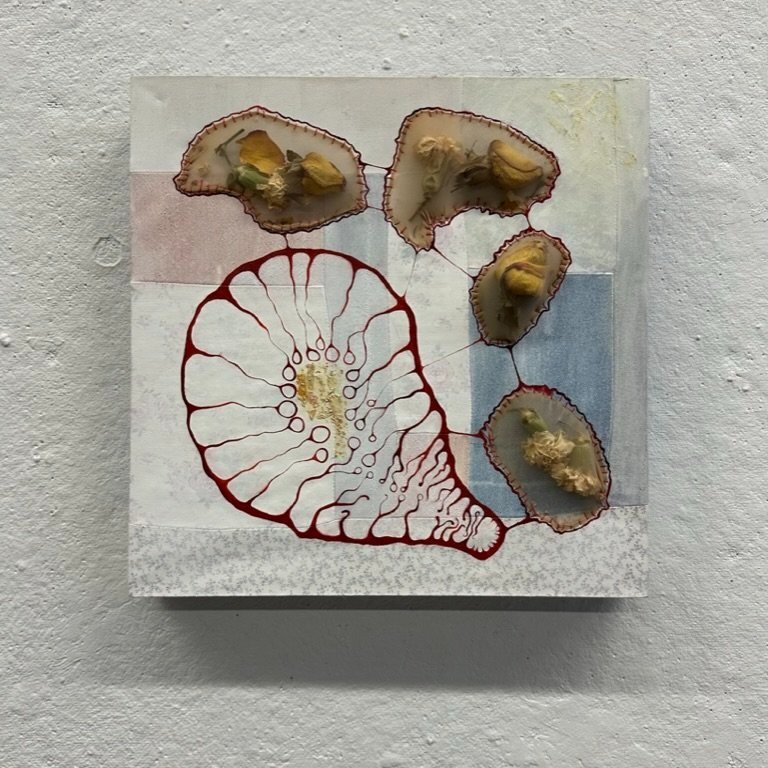
quilted found fabrics, pantyhose, dried flowers, thread, pantyhose, oil paint.
2024



digital embroidery, hand embroidery, screenprint, applique
2024



lemon, satin, hand sewing
2024
performed






burying the secrets.
2024
performed



embroidered heart with milkweed, palo santo, marigold, seaglass, and sage.
2024






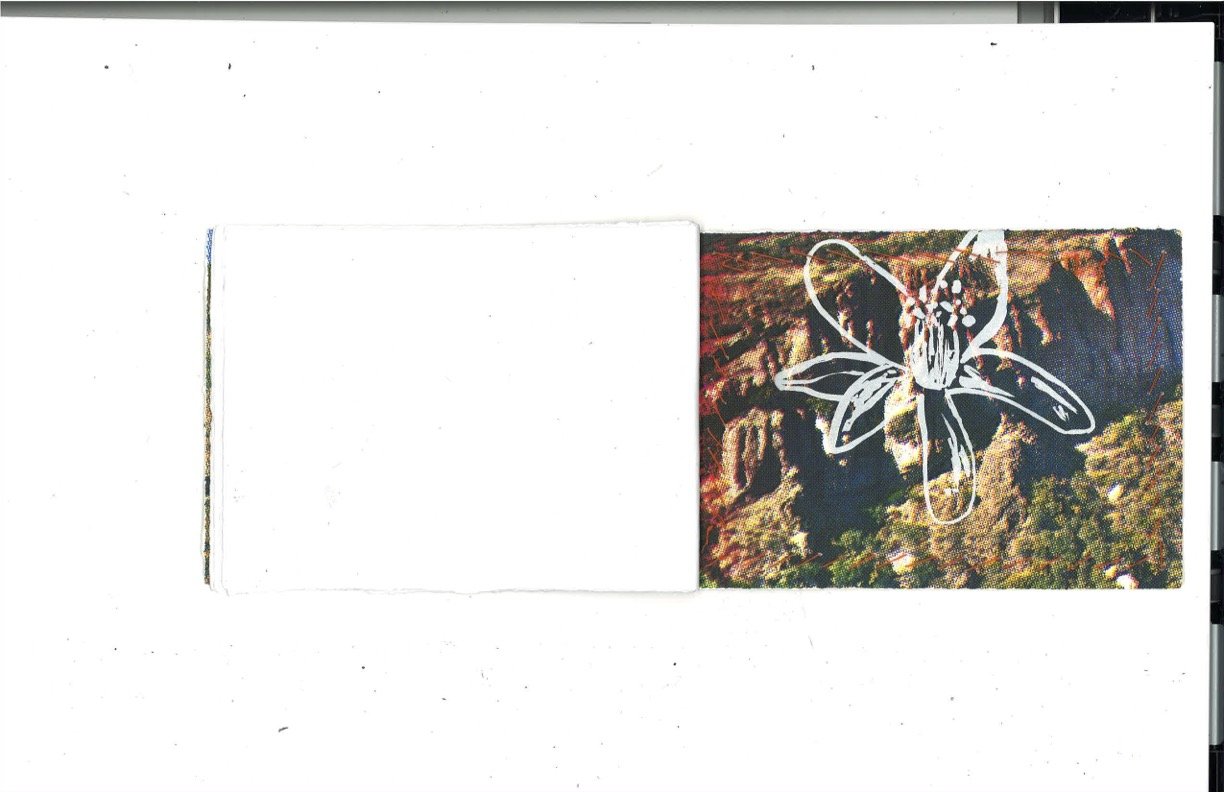

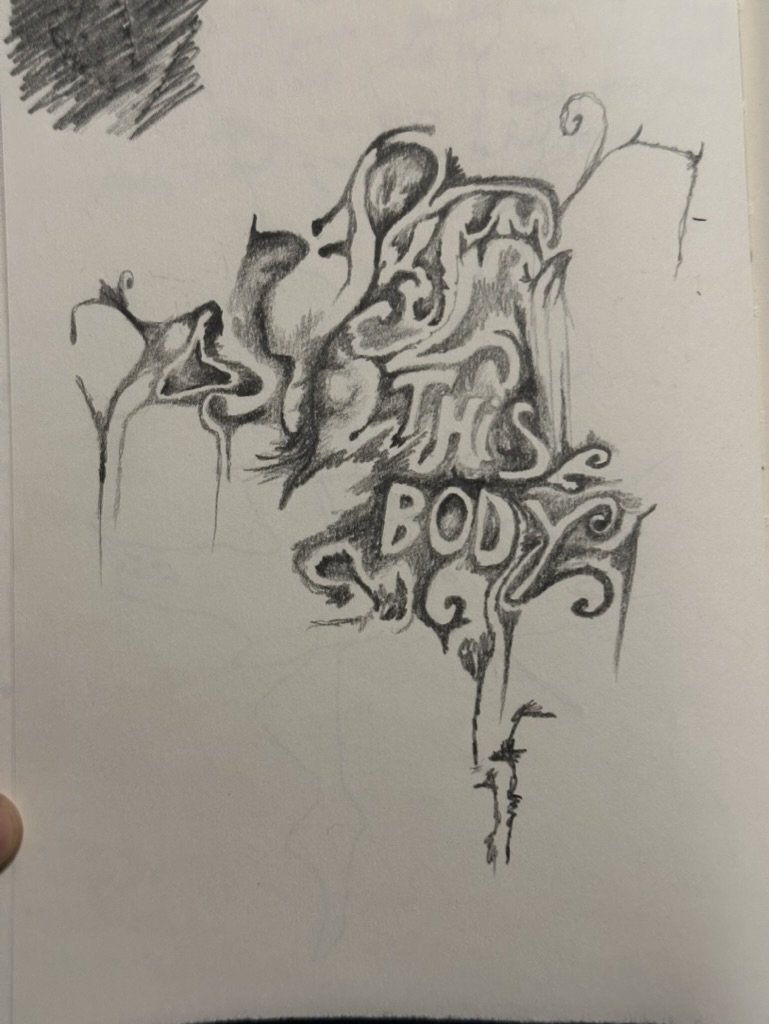
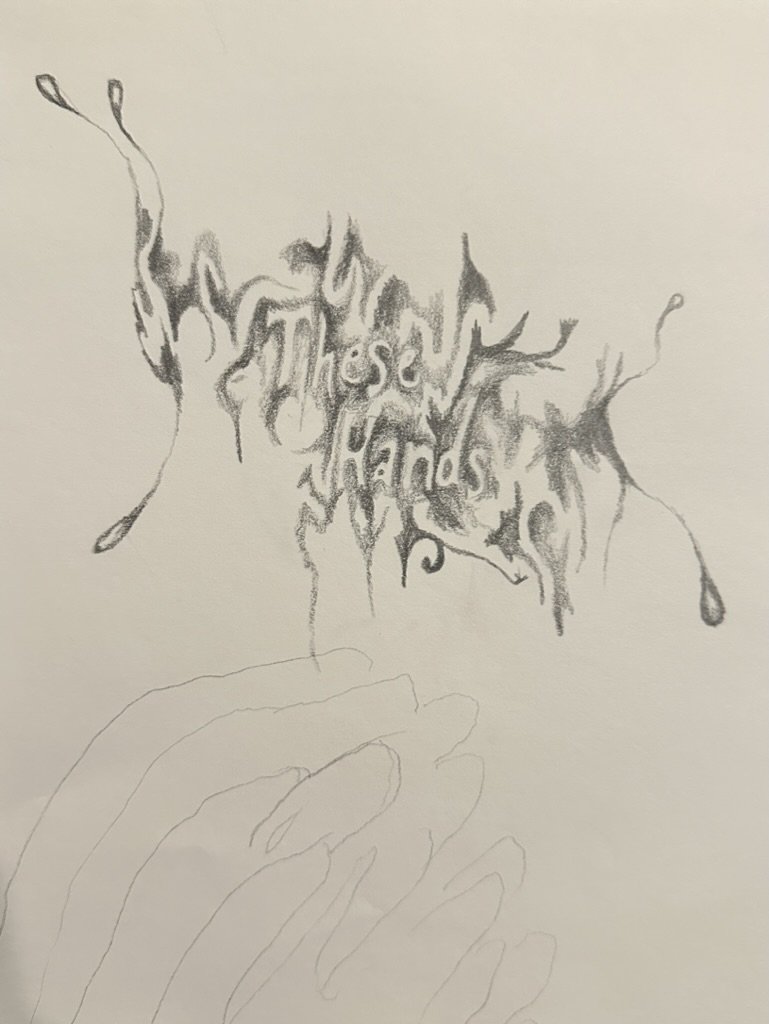
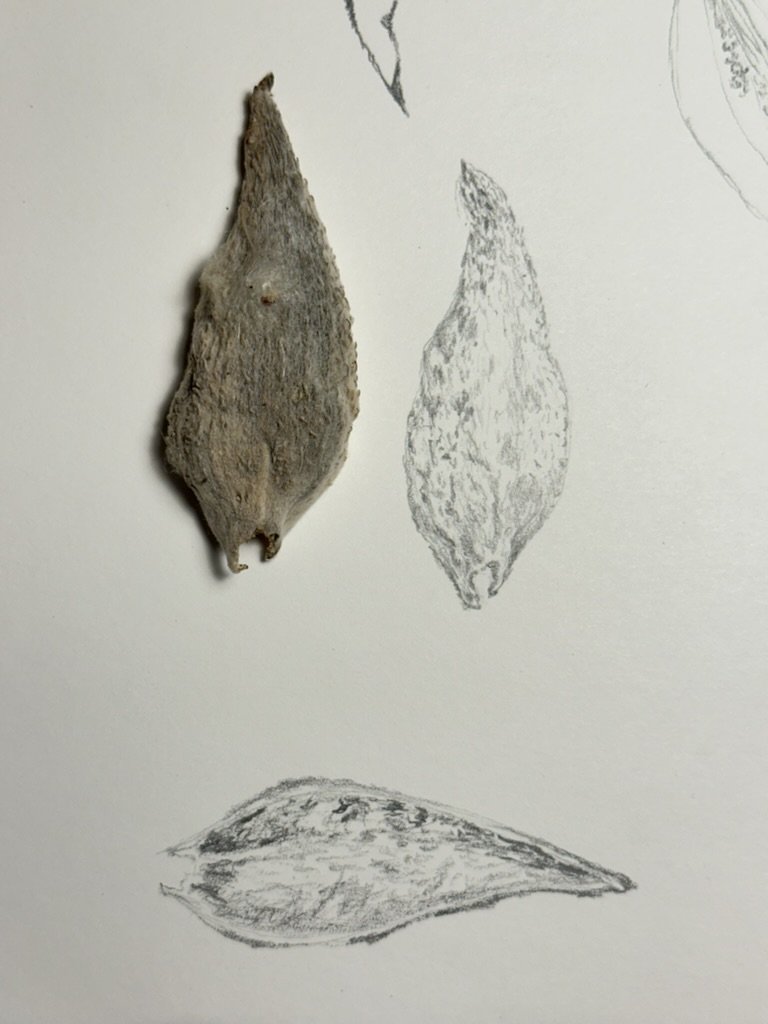

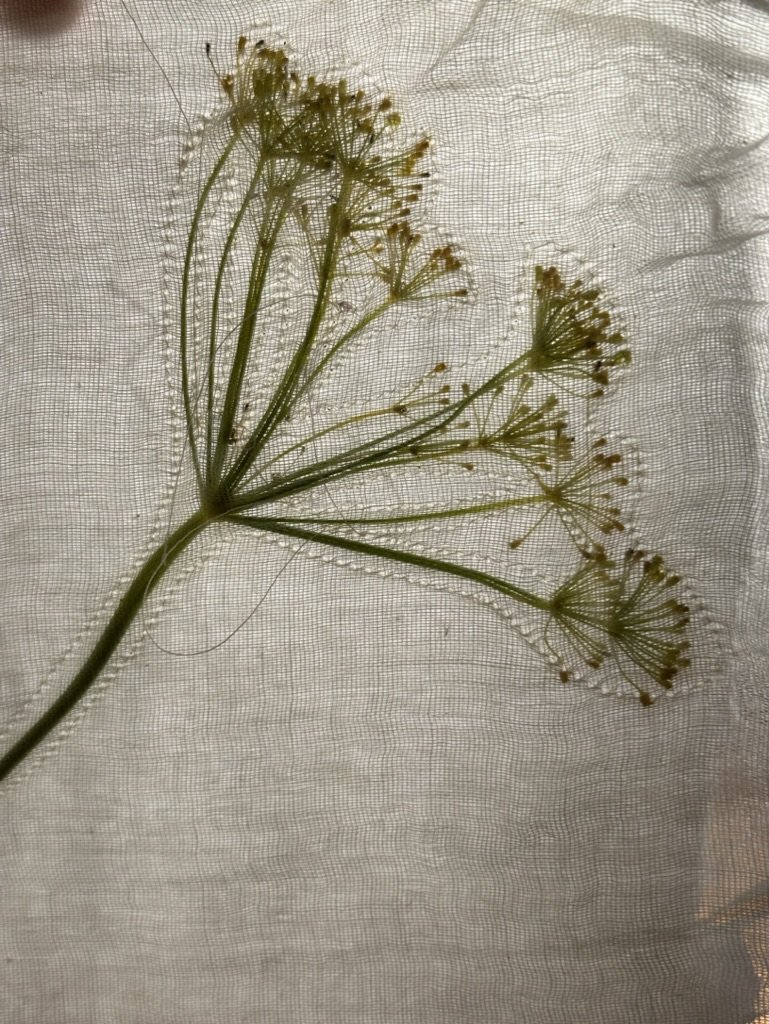
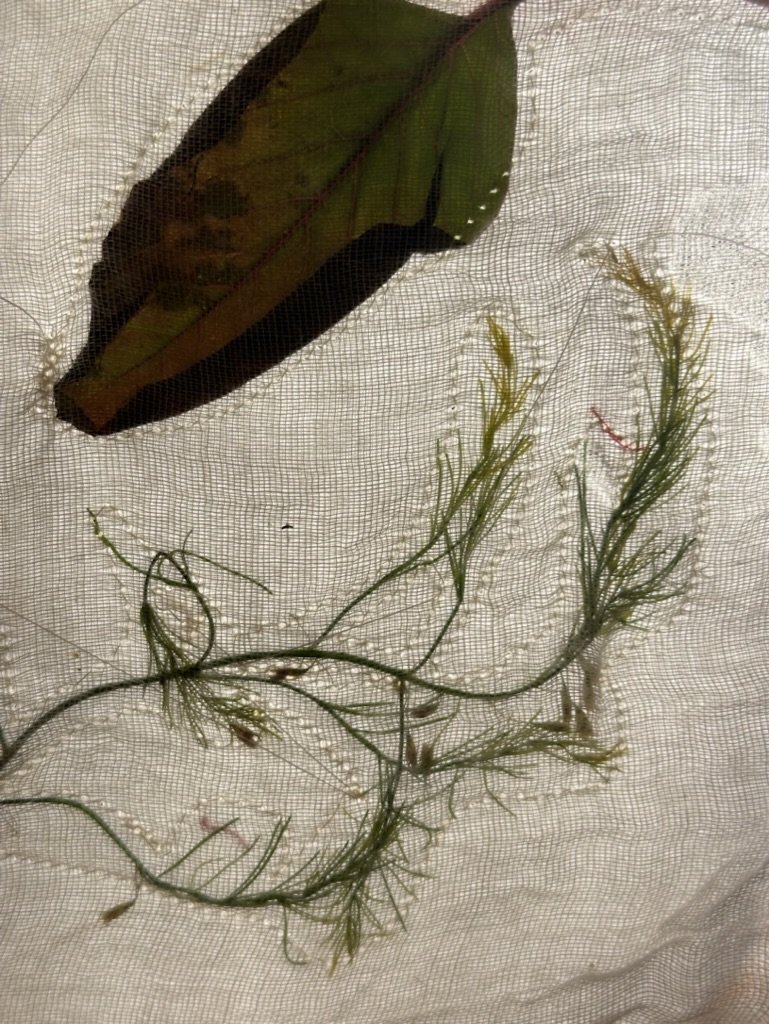


screeprint on Art Institute Chicago giftbag. see next image for description.

Nylon tights, beads, items from my childhood, magazine clippings, gesso, film, and a map of where I live.
Representative of the bubble of childhood and the process of growing older, coming out of the bubble, and reminiscing on the vibrance and safety of childhood. Outside of the bubble, I subtly added elements that relate to adulthood and loss of innocence, such as Penthouse magazine clippings, cigarettes, and a film strip. To create this piece, I used an old canvas which I stretched the pantyhose over and proceeded to sew on by hand. I filled the "pocket" this created with beads and small things I have collected over the years. I sewed Chinese-American flashcards that read "mother," "father," and "sister," for my family is very important to me and being of Chinese descent is as well.
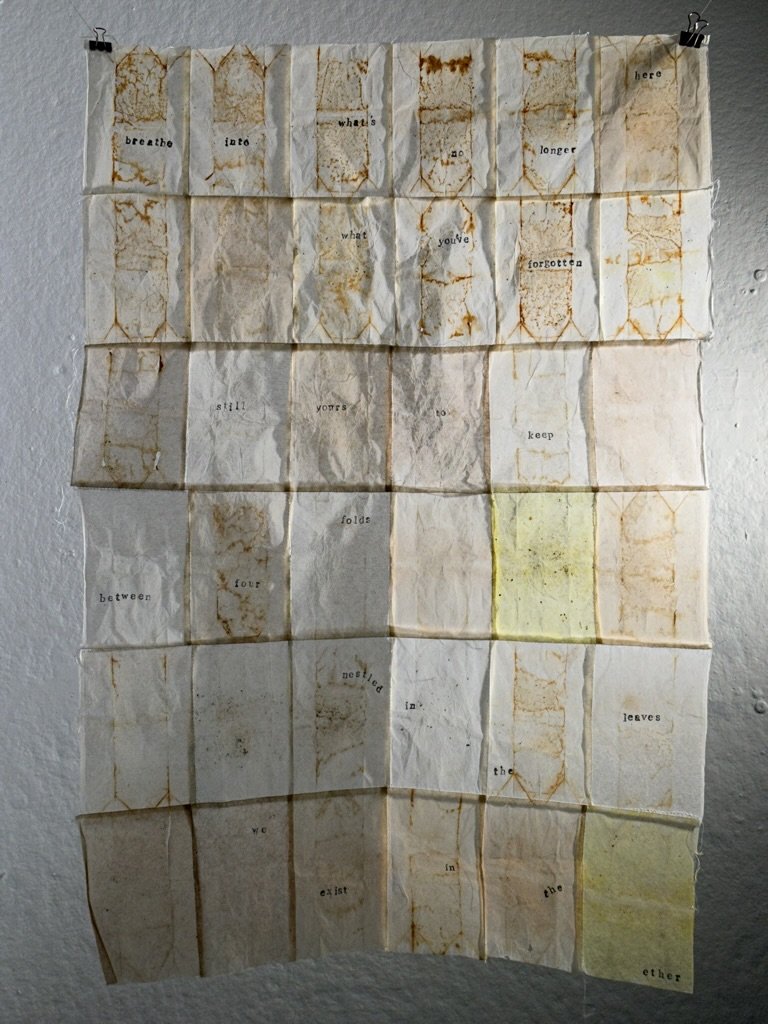
poem printed on used tea bags using stamps.
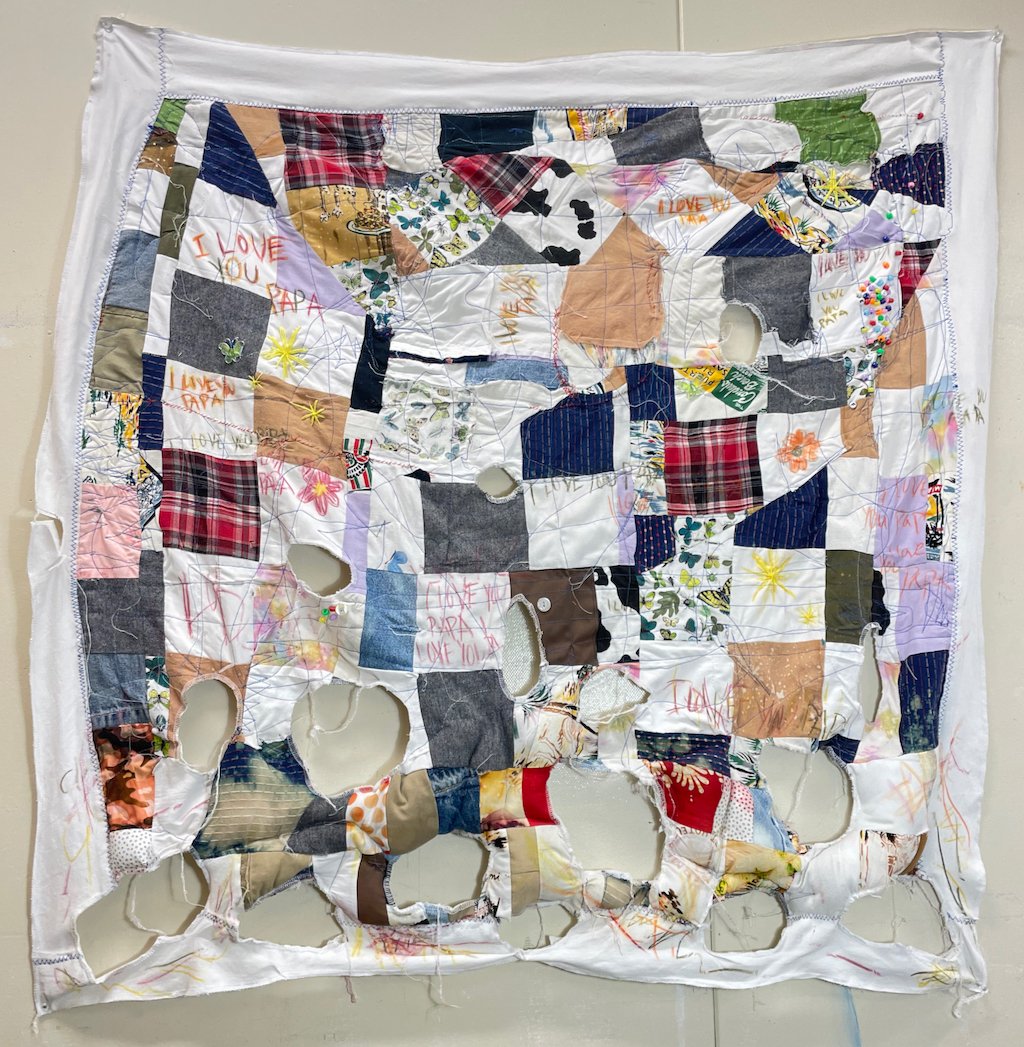
“I LOVE YOU PAPA” is made from scraps of fabric I collected over the years. I sewed the scraps to make a quilt, which I proceeded to cut up and sew back together. Represents the disorder and confusion of Alzheimer’s, and the nostalgia of childhood. Before closing up the border around the quilt, I stuffed the bottom section with batting to create three-dimensionality which symbolizes how both my grandfather and I have grown despite the adversities we have faced. To embellish the quilt, I scrawled “I LOVE YOU PAPA” all over the quilt. Defacing the quilt with these words, an act of desperation and anger from being helpless to save or restore him is a proclamation of my love for him.

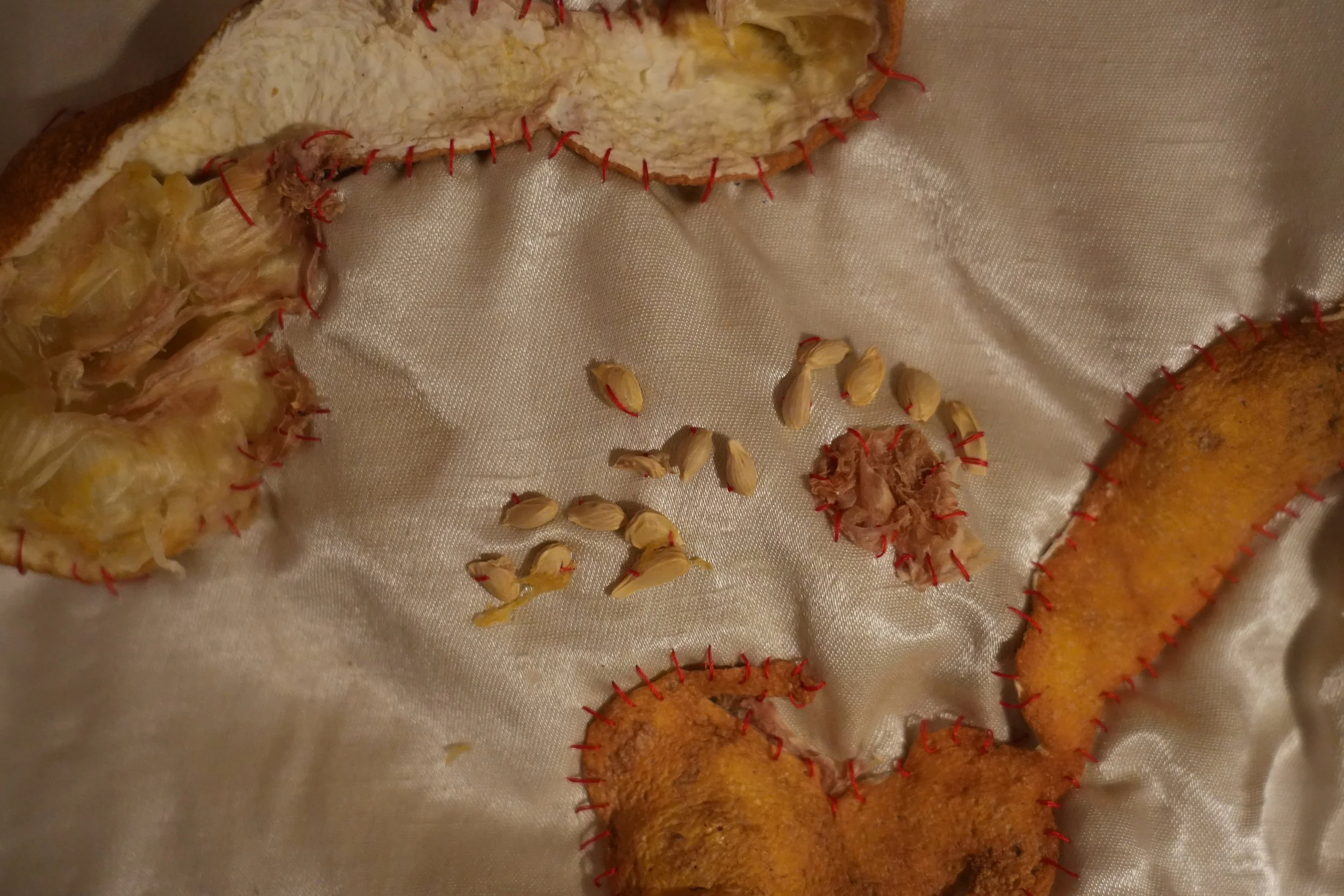



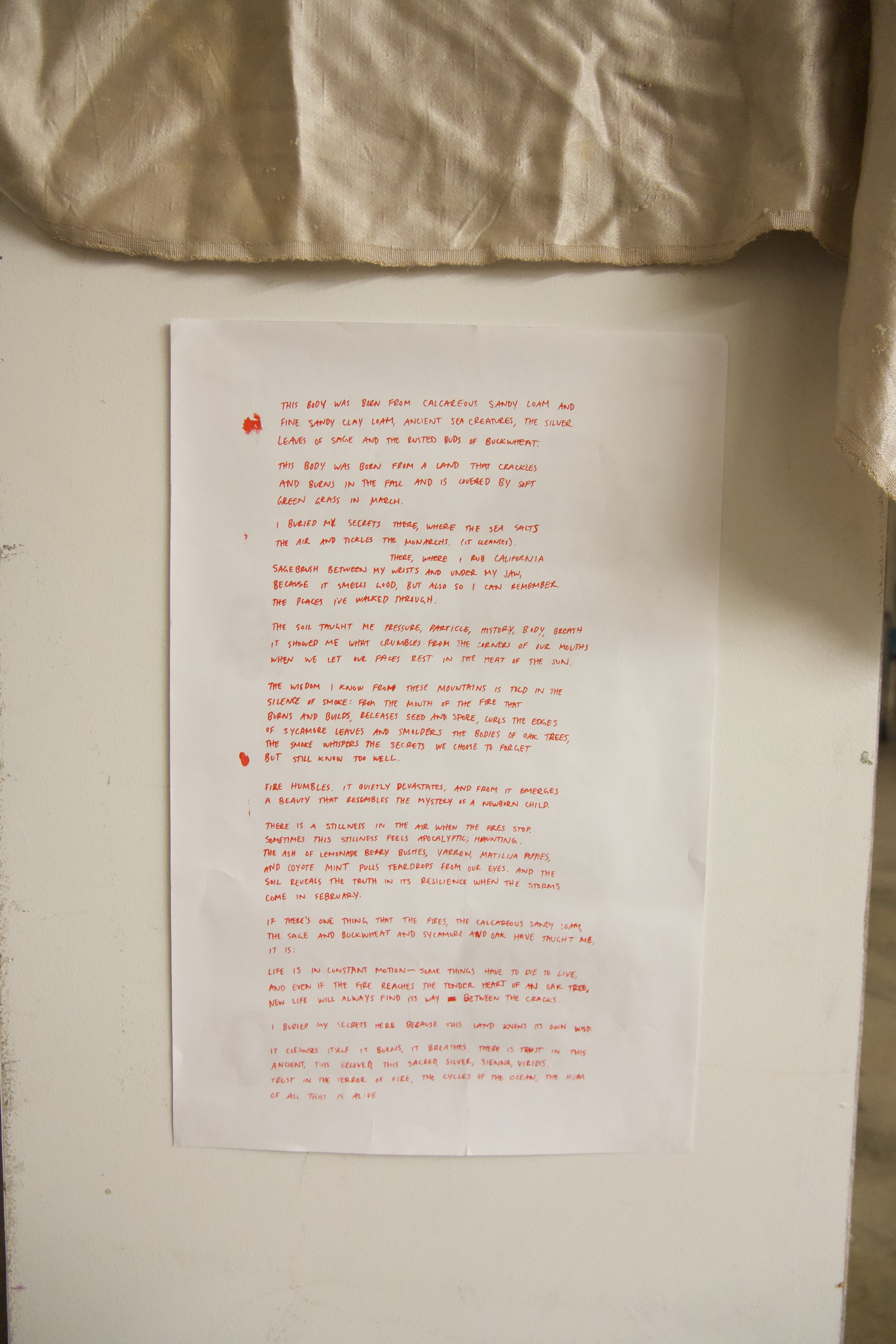



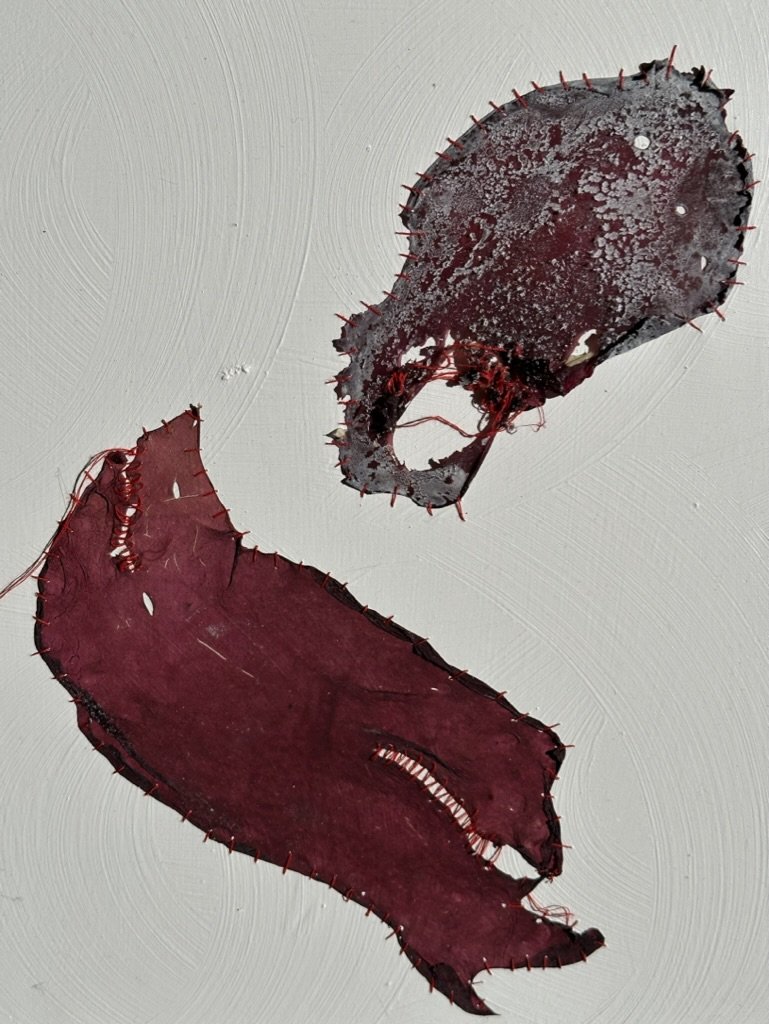
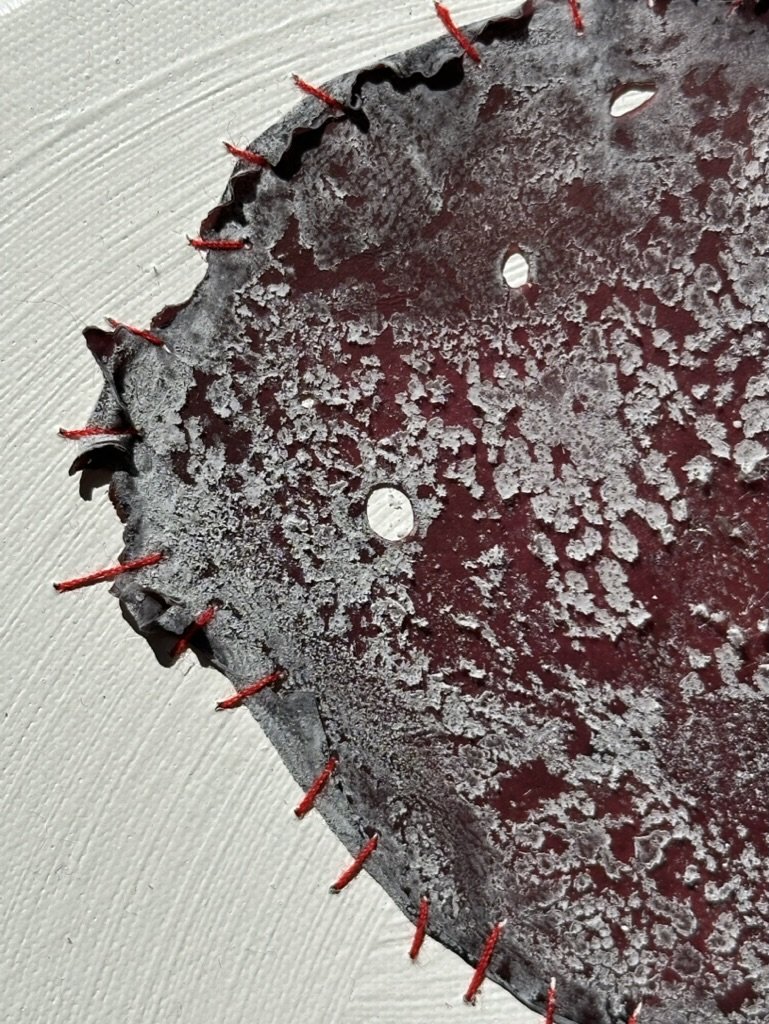


















































weaving. 2025
In its form and in its making, this weaving is a reference to the body, a body, my body, a trans body. It is an act of resistance.
It represents my body as it engages in the act of peeling away trans tape: a material that affirms me in my identity, and a process that returns me to my body as it is. My relationship to trans tape is unique in that it is a material manifestation of my gender, and it changes the way I walk through the world.
While the weaving records this moment of intimacy, tension, and unveiling, it acts as a mirror to the realities we face as a society during the rise of proto-fascism and right-wing extremism. trump administration; the violent peeling away of trans rights, DEI, healthcare, and language about race, gender and sexuality. Unlike removing trans tape, this peeling away doesn’t only leave sticky adhesive and skin abrasions; it costs lives. By suicide and homicide. By lack of healthcare.
Textiles have historically been a way in which people create records of personal and cultural histories, especially in the context of oppressive political regimes. This weaving is an attempt to create a record of my trans body doing a trans thing, through the labor of my own body and loom. Due to its physical form and its proximity to my body, this work cannot be erased, deleted, or taken down… compared to digital forms of information, about topics that have been banned by the current administration.
This self-portrait represents my identity, but it has limitations, as it does not accurately represent transness as a whole. It does not show the lives and work of the many trans Black, Indigenous, and People of Color (BIPOC) that have come before me and laid the groundwork for the freedoms and rights that I have been able to enjoy as a trans person. Our lives in America wouldn’t be the same without the work and lives of BIPOC, and the same applies to the trans and queer communities, cultures, and rights.
Though I identify as nonbinary, I am still white and femme-passing, and my safety, health, and rights are far less at risk than that of BIPOC trans people, who are directly targeted by the system. As we face a new era of hate, erasure, and atrocities we don’t even know the names of yet, it is imperative that we consider how we can better support one another, keep each other safe, preserve our histories, and build kinship across communities. Within queer and trans communities, we need to better understand the histories of Black, Indigenous, and People of Color in order to better understand our own experiences, identities, and culture.
aloe, cotton cord, trans tape
constructing my armor
2024
performed
quilted found fabrics, pantyhose, dried flowers, thread, pantyhose, oil paint.
2024
digital embroidery, hand embroidery, screenprint, applique
2024
lemon, satin, hand sewing
2024
performed
burying the secrets.
2024
performed
embroidered heart with milkweed, palo santo, marigold, seaglass, and sage.
2024
screeprint on Art Institute Chicago giftbag. see next image for description.
Nylon tights, beads, items from my childhood, magazine clippings, gesso, film, and a map of where I live.
Representative of the bubble of childhood and the process of growing older, coming out of the bubble, and reminiscing on the vibrance and safety of childhood. Outside of the bubble, I subtly added elements that relate to adulthood and loss of innocence, such as Penthouse magazine clippings, cigarettes, and a film strip. To create this piece, I used an old canvas which I stretched the pantyhose over and proceeded to sew on by hand. I filled the "pocket" this created with beads and small things I have collected over the years. I sewed Chinese-American flashcards that read "mother," "father," and "sister," for my family is very important to me and being of Chinese descent is as well.
poem printed on used tea bags using stamps.
“I LOVE YOU PAPA” is made from scraps of fabric I collected over the years. I sewed the scraps to make a quilt, which I proceeded to cut up and sew back together. Represents the disorder and confusion of Alzheimer’s, and the nostalgia of childhood. Before closing up the border around the quilt, I stuffed the bottom section with batting to create three-dimensionality which symbolizes how both my grandfather and I have grown despite the adversities we have faced. To embellish the quilt, I scrawled “I LOVE YOU PAPA” all over the quilt. Defacing the quilt with these words, an act of desperation and anger from being helpless to save or restore him is a proclamation of my love for him.